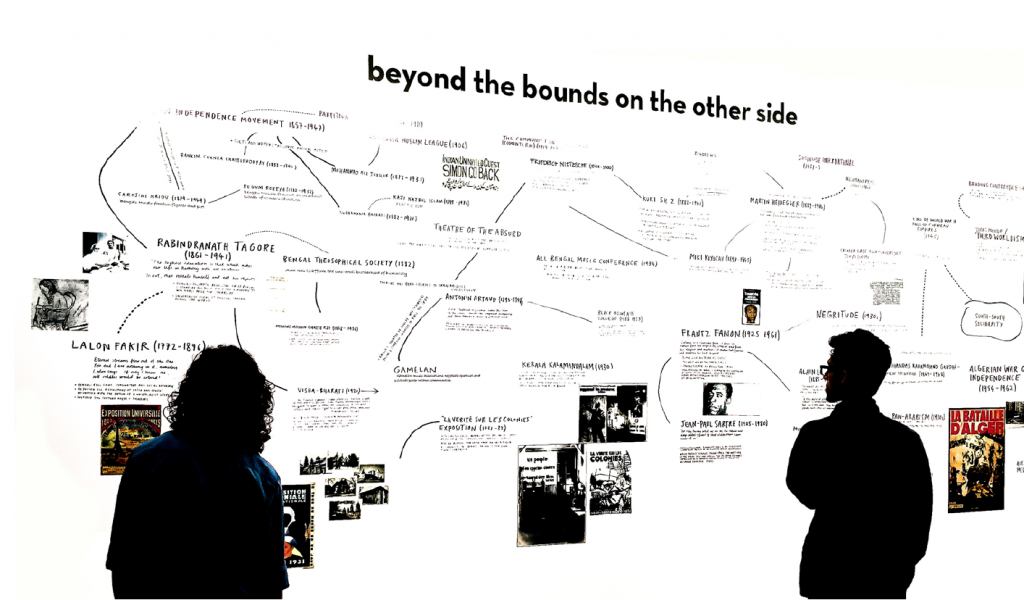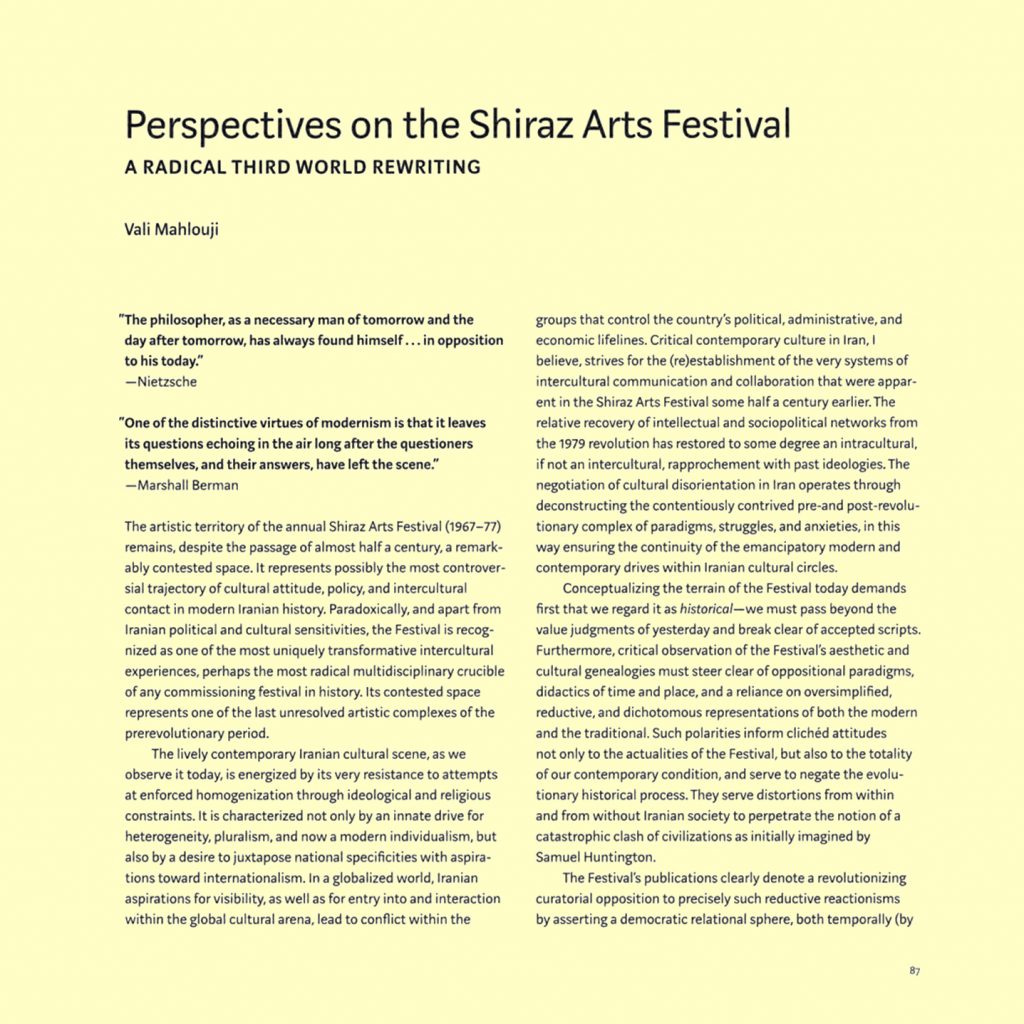
Archaeology of the Final Decade explores the genealogies and implications of the Festival of Art’s modernist ambitions, using it as a lens through which to reconsider the legacies of modernism’s radical progressive arc.
Our interest is in locating the festival in the immediate aftermath of decolonisation, to understand how the festival put cultural expressions from Asia and Africa on the map as valuable and equal. Its pioneering ‘world stage’ brought together these distant voices alongside Western expressions from both sides of the Iron Curtain. The process of discovery, deconstruction, reorientation, and the affirmation of non-European sensibilities found a natural ally in the internationally fluid and subversive avant-garde, which sought to break from the constraints and stabilities of its own traditions.
The festival summoned a complex network of artistic perspectives, which resulted in a collective, hyper-modernist, arena of experimentation. Its programme juxtaposed performances ranging from the intimate to the ritual, archaic to contemporary, folkloric to experimental, and satirical to subversive.
The festival proposed a sophisticated version of universalism that would reject any reductive principle of a unified globalised culture. Instead, the careful selection of programming mapped encounters that dreamt up a utopian vision of heterogeneous unity. This vision was articulated temporally and spatially – the festival’s stage united diverse expressions across historical time and improvised alternative performance spaces across the open city and nature.
AOTFD’s critical reading of the festival reconstructs a complex space of international modernity by highlighting the ‘third worldist’ sensibilities of the immediate post-colonial period and tracing a cultural atlas through which knowledge was exchanged across alternative (often non-European) plateaus. This process of global ‘reorientation’ takes us through a reconstruction of the gaze – subverting the single ‘reading’ of West to East into a more cyclical model, engaging in cultural negotiations from East to East, East to West, South to East, South to South – constructing a panoramic exchange of global artistic discourse.
Situating the festival against the background of contemporaneous political events and movements like the Non-Aligned Movement and Pan-Africanism, we examine how Shiraz-Persepolis acted as a contested site of competing solidarities and proliferating visions of an interconnected world; and how, importantly, it facilitated the encounter between international and local avant-garde.
We present the festival in seven episodes
Further in-depth reading

“Perspectives on the Shiraz Arts Festival. A Radical Third World Rewriting” in Iran Modern, ed. Fereshteh Daftari and Layla Diba (New York: Asia Society Museum and Yale University Press, 2013), 87-91.
Read the text
Publications & Texts written by Vali Mahlouji, critically exploring the subject of the Festival of Arts, Shiraz-Persepolis.
View the texts

Talks & Lectures delivered by AOTFD and Vali Mahlouji on the Festival of Arts and associated exhibitions, featuring guest speakers.
Explore the talks

